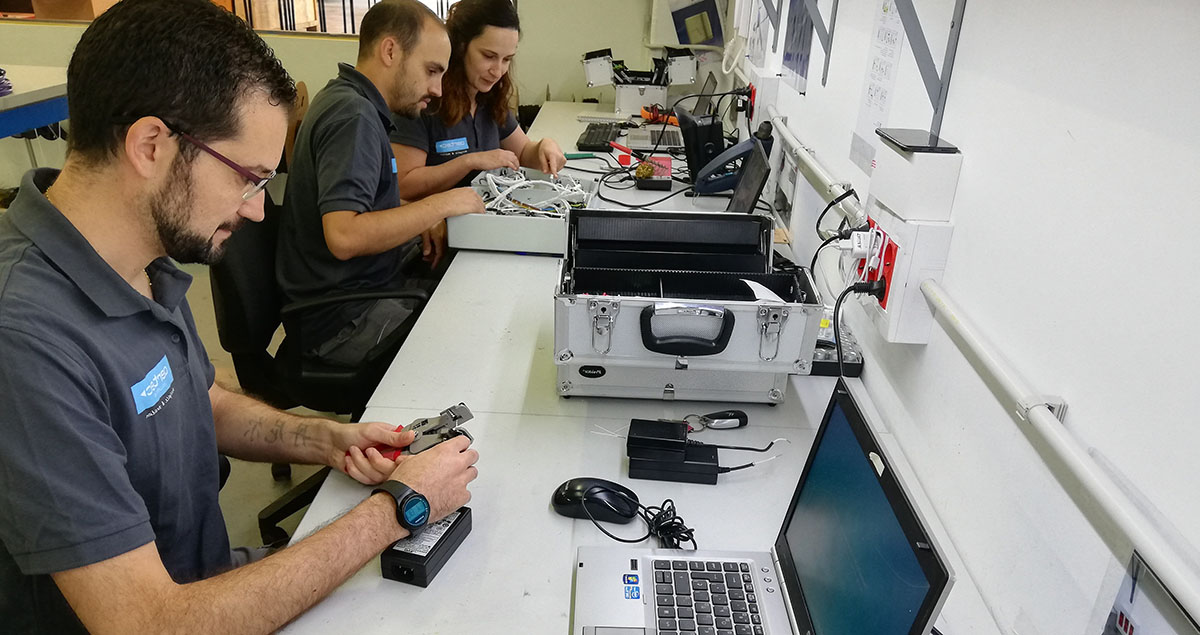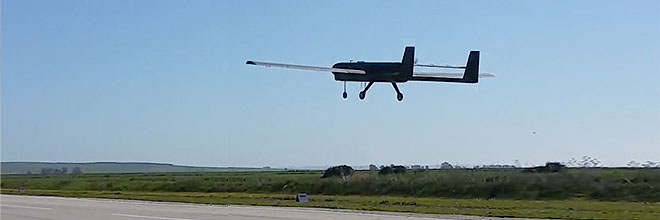
Innovation in aerospace and defence systems
In the field of aerospace and defence systems, we innovate in three areas of knowledge: the development of new solutions in the areas of the guidance, communications and remotely piloted aircraft systems’ architecture; the MEA (More Electric Aircraft) concept’s evolution, which is geared at greatly improving aircraft efficiency; and advanced defence systems.
RPAS
Area of innovation: Sense & Avoid systems
The VIGIA project focuses on low-risk operations in which aircraft of less than 25Kg will be used, at low flight height (below 120 meters, or also called VLL flights; Very Low Level), in rural environments , out of line of sight and in non-segregated airspace.
The VIGIA project, with the focus on this type of operations, will develop a Detection and Avoidance System in collaboration with the Spanish civil aviation authorities, and thus aligning with the European U-space vision. All this is validated in long-distance flights in operations of lower risk and thus creating the basis for the development of the main potential market of RPAS.

The VIGIA project, with file number ITC-20181032, has been co-financed by the European Regional Development Fund (ERDF), through the “Pluriregional Operational Program of Spain” and the Ministry of Science, Innovation and Universities, through the Center for the Industrial Technological Development (CDTI), within the framework of the call FEDER INTERCONECTA 2018 within the “State Plan for Scientific and Technical Research and Innovation 2017-2020”. The total budget of the project is € 1,225,820, co-financed by CDTI and FEDER with a total of € 538,850, and will be executed in the Autonomous Community of Andalusia, within an execution period of 27 months.

- The development of a power system based on PEM fuel cell technology which allows onboard energy to be increased.
- The development of an integrated control system (for energy and the aircraft) which adapts trajectories in real time to optimise energy consumption.
- The design and development of an especially conceived aircraft to increase its autonomy, which is in turn be capable of integrating the mission system needed for environmental monitoring tasks.
 The project’s file number is ITC-20151197 and it has been co-funded by the European Regional Development Fund (ERDF) through the “Smart Growth Operating Programme 2014-2020” and the Ministry of the Economy and Competitiveness through the Centre for the Development of Industrial Technology (CDTI) under the ERDF INNTERCONECTA 2015 call.
The project’s file number is ITC-20151197 and it has been co-funded by the European Regional Development Fund (ERDF) through the “Smart Growth Operating Programme 2014-2020” and the Ministry of the Economy and Competitiveness through the Centre for the Development of Industrial Technology (CDTI) under the ERDF INNTERCONECTA 2015 call.
Area of innovation: Guidance, navigation and control
Led by Boeing R&T, AERTEC Solutions took part in the design and development of a UAS flight management system (FMS) and a functional testing management graphic interface for an aerial platform test bench.
Area of innovation: Guidance, navigation and control
This initiative was led by Boeing R&T. AERTEC Solutions took part in the development of a UAS control and guidance system aimed at reducing energy consumption which at the same time offers robustness in the event of turbulence.
MEA (More Electric Aircraft)
 The research which has led to these outcomes was funded by the European Union’s Seventh Framework Programme (FP7/2007-2013) for the Clean Sky Joint Technology Initiative under Grant Agreement No. [641463].
The research which has led to these outcomes was funded by the European Union’s Seventh Framework Programme (FP7/2007-2013) for the Clean Sky Joint Technology Initiative under Grant Agreement No. [641463].
 The research which has led to these outcomes was funded by the European Union’s Seventh Framework Programme (FP7/2007-2013) for the Clean Sky Joint Technology Initiative under Grant Agreement No. [271875].
The research which has led to these outcomes was funded by the European Union’s Seventh Framework Programme (FP7/2007-2013) for the Clean Sky Joint Technology Initiative under Grant Agreement No. [271875].
Advanced defence systems
Area of innovation: Terminal guidance systems
AERTEC Solutions in conjunction with EXPAL carried out the design, HW & SW development and implementation of an electro-optical terminal guidance system based on the recognition of a laser designator which singles out the target from the ground.

